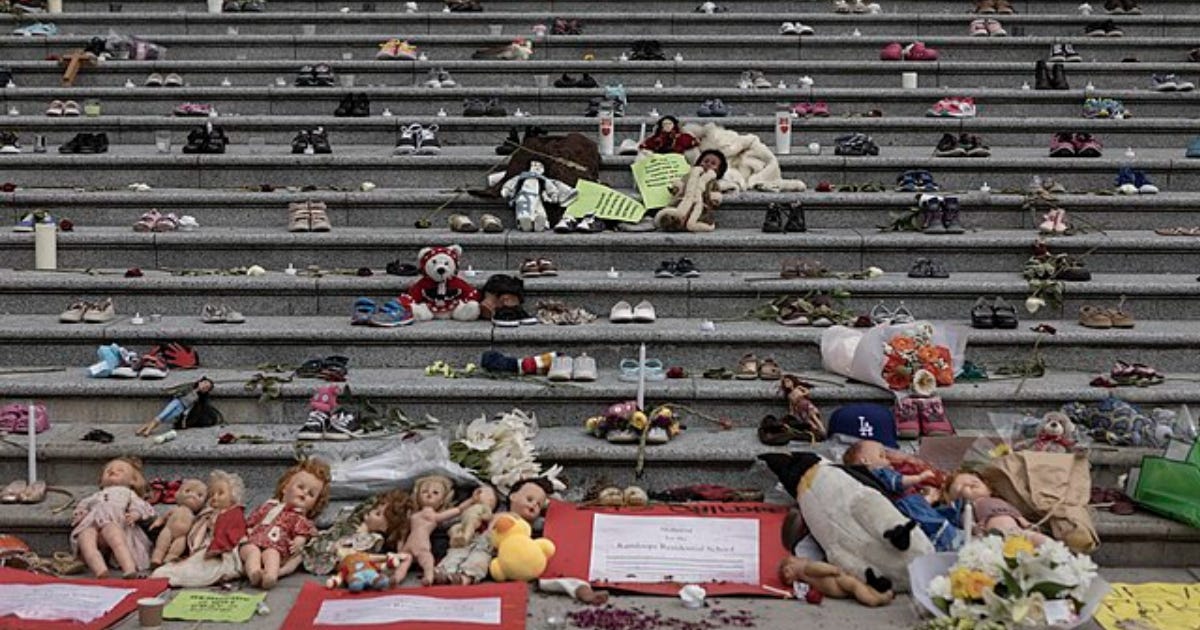First Nation claims 41 new unmarked graves ‘found,’ despite no excavations
The shíshálh First Nation announced that an additional 41 unmarked graves have been “discovered,” despite no sites being physically excavated.
Two years after claims were first made about the clandestine burial of Indigenous children at a former residential school in B.C.’s Sunshine Coast, the shíshálh First Nation announced that an additional 41 unmarked graves have been “discovered,” despite no sites being physically excavated.
The shíshálh Nation first announced in 2023 that 40 unmarked graves were detected based on the results of ground-penetrating radar scans around the area of the former school.
The new findings bring the total number of unmarked graves claimed at the site to 81. To date, no actual excavations have taken place.
“We are deeply saddened, but these numbers are not a surprise to us. We have always believed our Elders. This wasn’t a school, it wasn’t a choice, and the children who attended were stolen,” Chief Lenora Joe said in a video statement on Friday.
“We didn’t need the GPR to prove this happened; we always had enough proof to know.”
The nation asked that people not focus on the numbers or become “desensitized” to the idea of unmarked graves.
However, these claims have yet to be substantiated by any third-party researchers.
According to Joe, any further work will be paused temporarily to allow for reflection within the community and to let the children rest.
The nation also requested privacy from the public but said that people can show their support by wearing orange shirts and flying flags at half-mast.
According to the National Centre for Truth and Reconciliation, five children died while attending the school, which opened in 1904.
“In 1923, the parents withdrew their children from the school to protest the poor quality of education, harsh discipline, and inadequate diet,” writes the NCTR.
“The protest led to the appointment of a new principal and an increase in school funding. The facility closed in June 1975.”
The shíshálh Nation’s claims come on the heels of the fourth anniversary of claims that were made that at least 200 potential children were buried beneath the former Kamloops Indian Residential School site based on ground-penetrating radar.
The federal government initially responded to the claims by creating a committee, co-administered by the National Centre for Truth and Reconciliation and the federal Department of Crown-Indigenous Relations and Northern Affairs.
However, the government discontinued the committee’s funding in February. Although the search began in 2021, no bodies have been located.
According to a report from the Angus Reid Institute last week, 63 per cent of Canadians and 56 per cent of Indigenous people “hold the view that further evidence through exhumation is necessary to accept that the remains of children are buried at the site.”
The Kamloops ground-penetrating radar initiative also led to other former residential school sites conducting excavations in hopes of finding other clandestine burials.
In August 2021, a team of researchers in Shubenacadie, Nova Scotia, excavated the former Shubenacadie Residential School in search of remains but found no conclusive evidence.
In October of 2021, an excavation was conducted for unmarked graves on the site of the former Camsell Hospital in Edmonton. The hospital used to treat Indigenous people who suffered from tuberculosis, and some believed that the dig would uncover patients who had been buried there; however, no such evidence was discovered.
In August 2023, a four-week excavation was conducted in a church basement in Pine Creek, Manitoba, which was formerly part of a residential school run by the Catholic Church from 1890 to 1969.
Minegoziibe Ashinabe, a First Nations tribe northwest of Winnipeg, hired a team of archaeologists to dig up the church basement following 14 abnormalities that were detected in the soil by ground-penetrating radar equipment.
However, no human remains were found in the search.



Give it up people. You’ve not only lost ALL credibility, but you’re making TOTAL fools of yourselves.
For everyone’s sake, especially yours, PLEASE move on.
Tell them to shut up until they use some of 8 million dollars to excavate. We need receipts too.